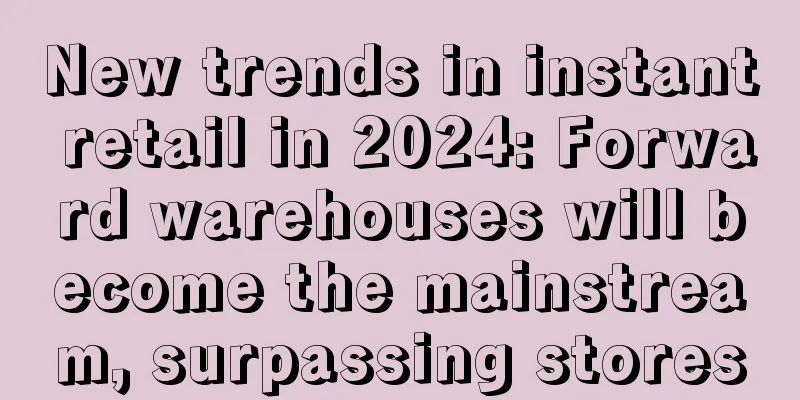Young people who are anxious about controlling sugar have begun to study nutritional grading

Not long ago, Shanghai's freshly brewed tea industry began to implement a "grading system", with brands such as Bawang Cha Ji, Nayuki's Tea, Happy Lemon, and CHALI becoming the first batch of "Nutritional Choice" logo pilot companies in Shanghai. Unexpectedly, the fresh food e-commerce platform "Dingdong Maicai" also recently announced that it would join the ranks of the "Nutritional Choice" label grading system. Ms. Chang is an old member of Dingdong and places an order every now and then. Recently, she found that some carbonated drinks, functional drinks, as well as fruit juices, milk teas, tea drinks and other products sold in the "Alcoholic Beverages" category on the platform have a green "Nutritional Choice" grading logo in the lower left corner. Image source: Dingdong Maicai App This logo is from the same school as the milk tea grading system that is being piloted in Shanghai recently. It also divides the beverages sold on the platform into four grades: ABCD. It is understood that Dingdong has completed the grading and labeling of nearly 200 product SKUs, all of which have been approved by the quality control department. In the future, Dingdong will continue to grade the beverages and foods on the platform to help consumers choose beverages that meet their needs more conveniently and quickly. So how did the trend of "beverage grading" come about? Is Dingdong's participation this time just following the trend? What does grading mean to consumers and companies? 1. The trend started with sugar controlThe development of things always has its cause and effect, and the same is true for beverage classification. At the end of 2022, Singapore was the first in the world to launch a beverage grading system, requiring packaged beverages on sale to be printed with a nutrition grade label similar to a "traffic light". At the end of last year, Singapore further required that freshly brewed beverages sold in designated places must be divided into four grades, ABCD, based on the proportion of sugar and saturated fat (trans fat). In Singapore’s latest grading system, an important criterion is that both sugar content and trans fat content must meet the standard requirements of the same grade at the same time in order to be labeled with the corresponding grade. In addition, the grading system not only requires beverages to be labeled Nutri-Grade, but also imposes corresponding restrictions at the marketing level, prohibiting the publication of advertisements related to Class D Nutri-Grade beverages. Image source network Behind these seemingly harsh measures, there is a considerable degree of necessity: on the one hand, Singapore's population is rapidly aging, with the proportion of people aged 65 and above exceeding 19.1%; on the other hand, among the continuously increasing number of diabetes patients, there are more and more young people aged 30 to 40. According to the International Diabetes Federation, the prevalence of diabetes in Singapore's adult population was 14.9% in 2022, higher than Japan and China. Therefore, as early as 2013, Singapore launched fitness activities such as "Good Morning Exercise" and "National Walking Challenge" to encourage people to develop the habit of exercise. Singapore has also launched a "healthier food development program" for businesses and a "health screening program" for the public with government subsidies, hoping to improve the public's health awareness through multiple approaches. The Singapore government even said that it may consider imposing a tax on "sugar" in the future. If we review Singapore’s path, we will find that Shanghai’s trial of the beverage grading system this year also has traces to follow. In April 2022, China released the latest version of the Dietary Guidelines for Chinese Residents (2022) (hereinafter referred to as the "Guidelines"). Compared with the old version in 2016, two recommendations related to "sugar" in the new version have attracted people's attention. One of them is to recommend people to control the intake of added sugar under the principle of "less oil, less salt, control sugar and limit alcohol", not exceeding 50g per day, and preferably below 25g; the other is to recommend people not to drink or drink less sugary drinks. Of course, the reason behind this is that some data are shocking. The "Guidelines" show that the overweight and obesity rate of children and adolescents aged 6 to 17 in China is as high as 19%. In other words, about one in five children and adolescents in China is overweight or obese, and the proportion was 18% in 2015. According to the latest data released by the International Diabetes Federation (IDF), as of 2021, there are about 537 million patients worldwide, and the number of diabetes patients in China has reached 141 million, with an incidence rate as high as 12.8%. This does not include people at high risk of diabetes or some "pre-diabetic" people with impaired insulin. Diabetes is a metabolic disease, and sugar is not the only "killer", but it has become a consensus that a high-oil and high-sugar diet will cause obesity and eventually lead to a series of health risks. Controlling sugar and fat is imperative, and beverage classification is just the beginning. 2. Classification scenarios continue to expandAs people's health awareness increases, the healthier upgrading of consumer products is the general trend. Not long ago, Shanghai launched the first batch of nutrition and health instructor pilot projects, and implemented a "grading system" for freshly brewed tea drinks. From the results of more than three months of implementation, some consumers said that they already knew about the grading and would consciously choose healthier products when choosing milk tea. Some consumers also said that they would not pay much attention to the grading and would only choose according to taste. After all, choosing milk tea is for happiness. Retail Jun opened the ordering mini program of "Bawang Cha Ji", one of the first pilot tea brands, and found that there was a graded label next to each item. This label is not fixed, but will change dynamically according to the consumer's choice. For example, in the subdivision of original leaf fresh milk tea, when the retailer selected a cup of "Xingshi Chunshan" and clicked the option of "hot + standard sugar", the nutrition label of this cup of milk tea immediately showed "C". When the retailer changed "standard sugar" to "no additional sugar", the label was immediately adjusted to "B". Image source: Bawangchaji applet In the long run, the grading system is also a boon to the 0-calorie sugar industry. Yang Le, founder of the 0-calorie sugar brand "Ailetian", told Retail Jun that since 0-calorie sugar is a 0-calorie and 0-GI product, using 0-calorie sugar instead of sucrose can reduce the calories and glycemic index of milk tea. "We have currently cooperated with most of the leading tea brands, and will cooperate with more brands in innovation in the future." Although the current grading system stipulates that only beverages without any added sugar can be rated A, and beverages with added 0-calorie sugar can only be rated B, it is believed that B-grade beverages can also meet the "sweetness" needs of some consumers. Industry insiders said that starting with the tea drinks commonly drunk by young people is not only a beneficial exploration of sugar control, but also can encourage companies in the supply chain and milk tea companies to find a balance between health and taste through research and development innovation. Of course, sugary drinks are not limited to freshly brewed teas. The sugar content in bottled drinks should not be underestimated, so Dingdong Maicai was the first in the industry to trial the "Nutritional Choice" grading label for drinks on the platform. Image source: Dingdong Maicai App It is understood that the "Nutritional Choice" classification on Dingdong is also based on the standards set by the Shanghai Center for Disease Control and Prevention. It comprehensively evaluates the four indicators of non-dairy sugars, non-sugar sweeteners, saturated fat and trans fat of the products on the platform, and divides beverage products into four levels of ABCD. In general, beverages rated as A and B have lower sugar and fat content than those rated as C and D. Of course, the final evaluation still depends on the "shortcomings" of the four indicators. That is, if a product scores D in one of the four indicators, it will be rated D. Only when all four indicators meet the requirements of A will it be rated A. "The grades shown on beverages are marked based on the product ingredient list, nutritional composition table and raw material measurement results," said Hu Guodong, person in charge of Dingdong Maicai's nutritional grading project. Obviously, the application scenarios of nutrition grading standards are extending from the milk tea industry to other industries. In addition to the first batch of pilot enterprises, it is something to look forward to in which channels and scenarios consumers can see the nutrition selection grading logo in the future. 3. From sugar control to clean labelWhat do most people care about when buying food? According to the "2020 Chinese Consumer Food Label Awareness and Usage Survey Report" released by the China Food and Health Information Exchange Center, consumers who occasionally look at the ingredient list and nutrition label each account for nearly 50% of the sample, and consumers who never look at nutrition labels account for more than 13%. To improve health awareness, it is far from enough to rely solely on the guidance of relevant departments or product innovation of enterprises. Consumers' own emphasis on health and external factors complement each other. On the one hand, changes in the consumption environment can promote the upgrading of consumers' health awareness. On the other hand, consumers' personalized needs can also force companies to find opportunities in segmented tracks through innovation. The rise of the "ingredient party" is a clear proof. Initially, they focused on whether the ingredients of skin care products were healthy. Gradually, the field began to expand from skin care products to food and beverages. If you want to take money out of the pockets of this group of people, a clean ingredient list is the only weapon to "conquer" them. As a result, the "Clean Label" trend has swept the world , and some global food companies have begun to participate in and vigorously promote this concept. In fact, clean label originated in the European Union, but there are still no strict laws and regulations to regulate and define it. From a consumer’s perspective, you can simply understand clean label foods as not only the ingredients themselves are more natural, but also no artificial colors or preservatives are added, and the production process is also simple. It still sounds a bit vague, but if we say that commonly used organic foods and non-GMO foods in China are also clean label foods, this understanding may be more concrete. Starting from September 2022, Dingdong Maicai also launched a "Clean Label" special topic with standards set by the quality control department. Some ingredients with simpler ingredient lists and more natural ingredients are allowed to enter this special topic. It currently covers multiple categories such as baking, pre-prepared meals, and rice and flour products, and has selected nearly 600 products in total. Image source: Dingdong Maicai App In addition, the "traceability system" that some domestic companies have begun to implement is another way to help consumers identify the healthiness of food. For example, Metro has launched the "Green Label" for food. For any food printed with this green label, consumers can scan the code with their mobile phones to view every link in the entire life cycle of the product. Image source: Metro official Weibo In fact, whether it is clean labels, traceability systems, or the nutritional grading that has recently attracted widespread attention from the public, the ultimate goal is still to help consumers quickly and efficiently identify products that better meet their health needs. Zang Jiajie, director of the Nutrition and Health Department of the Shanghai Center for Disease Control and Prevention, said that the "Nutritional Choice" grading label has already had a positive impact on society, businesses and consumers. He hopes that the label can become an effective tool to help consumers choose healthy food and regulate the production behavior of food companies. It can be predicted that the birth of the "Nutritional Choice" grading label will not just be a passing fad, but will gradually penetrate into more industries and cities after continuous optimization and improvement - a new trend related to "health" is taking shape. Author: Tian Qiaoyun; Editor: Ge Weiwei Source: New Retail Business Review (ID: 1089053) |
<<: In-depth analysis UP hosts, can’t get out of the commercial siege?
>>: From fancy price cuts to frequent joint ventures, Starbucks can hardly remain immune in China
Recommend
How does Amazon determine sales through reviews?
There are many cross-border e-commerce platforms i...
Different ways to get traffic from Xiaohongshu's discovery page and search page
As a popular social platform, Xiaohongshu provides...
After the GMV of the first live broadcast exceeded 100 million, why did Tai Er Pickled Cabbage Fish become the center of attention?
Recently, the "old internet celebrity" i...
Zhuang Jun: After analyzing 1,000 popular articles on Xiaohongshu, I summarized these routines!
As a lifestyle sharing platform, Xiaohongshu not o...
What are the top ten popular internet memes in 2023?
Every time I make a summary, I know that another y...
Brand dividend
This article mainly analyzes the eleven elements o...
How to evaluate sellers on eBay? How to modify the evaluation?
Whether you buy something on a domestic e-commerce...
Why should consumers buy from you?
Marketing behavior is to guide humans to find the ...
How does Shopee advertising cost? What is the charging standard?
As a cross-border e-commerce platform, Shopee is v...
15 new lifestyle trends worth paying attention to in the post-epidemic era
Epidemic control has been basically relaxed, and t...
How much does it cost to open a store on eBay? What categories should I sell?
eBay is also a cross-border e-commerce platform. I...
Netizens disliked it, and brands cut ties with it: What did this pair of "conspicuous bags" do wrong?
There are many couple accounts operating on the In...
How to list products on Shopee Taiwan? Listing tutorial introduction
Shopee has different sites. If domestic merchants ...
How to watch live broadcasts on Shopee Live? How to activate it?
Nowadays, more and more people like to watch live ...
Mixue Ice City Globalization: The Snow King Sings and Dances His Way Around the World
Many brands have their own brand spokespersons or ...









